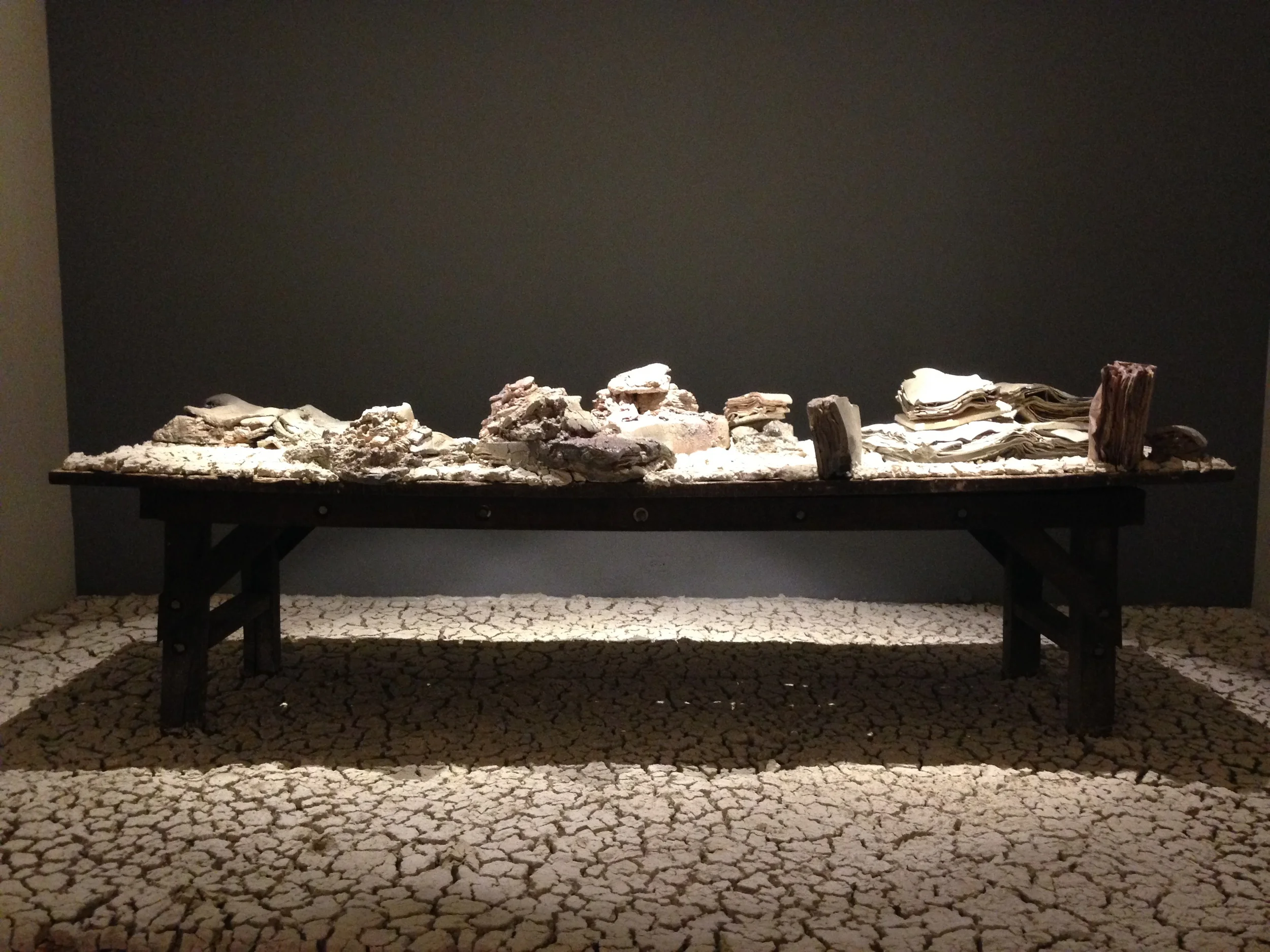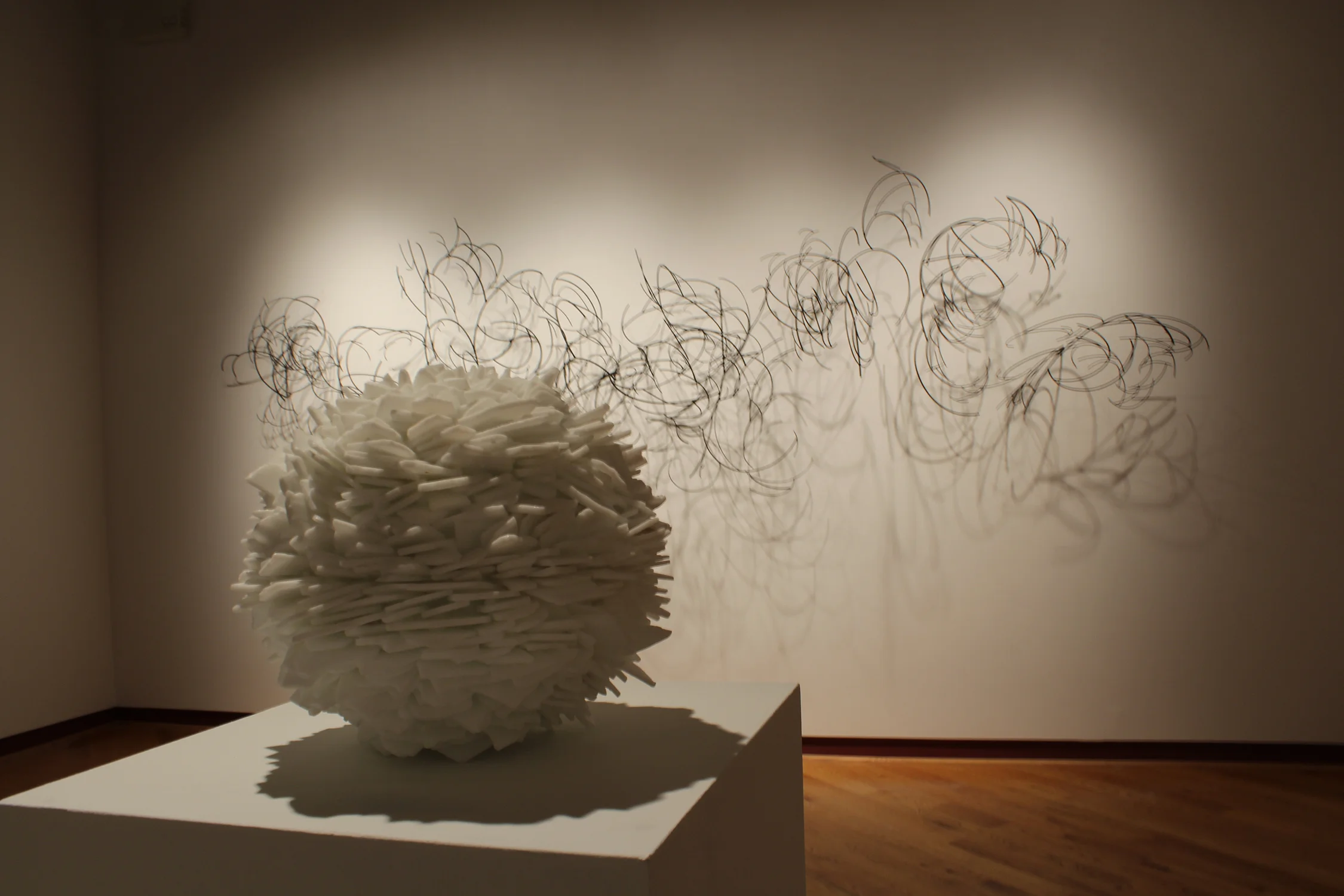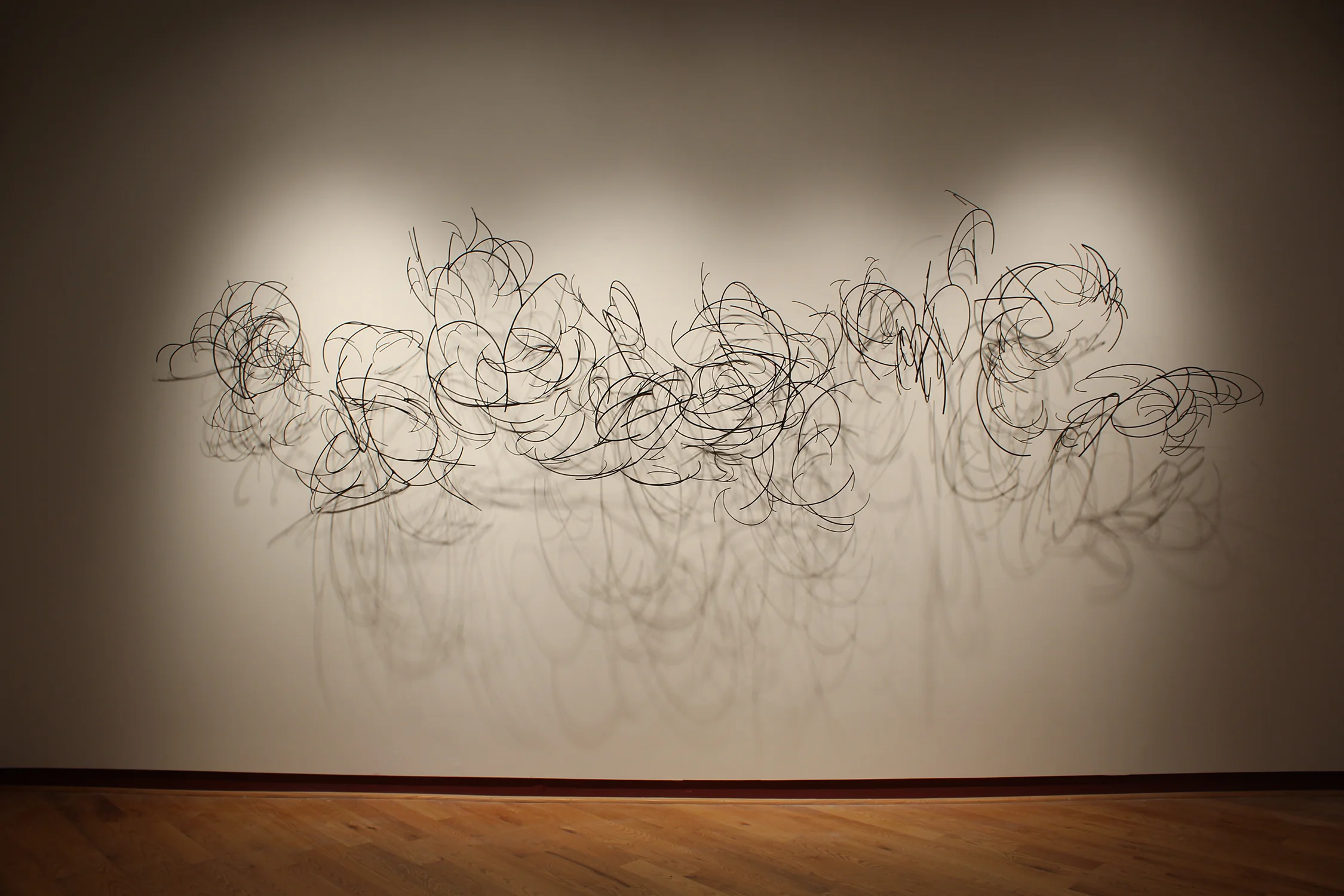Heidi Bender - Motherlands
Performance and wall based works
02/11 - 02/20/2011Pittsburgh Center for the Arts
Statement:
My projects are an examination of how areas of definition—of identity, separation, and connectedness to others—are constructed in daily life. I use existing parameters of space, class, and culture as identification categories that I overlay, distort, appropriate, and blend. Most often these largely social explorations take the form of art interventions in which I insert the body or self into interstices between different types of created spaces such as public/private, government/individual, socio-temporal/geographic, etc. Using the self as a wedge between these constructed terrains, I am able to explore the liminal space where distinctions and entities begin to emerge.
This exhibition, Motherlands, navigates the space mediating the realms between one’s social person and civic identity. If commerce is footloose and personal exchanges are facilitated more by technology than by geographical proximity, then how do our social networks and therefore our allegiances to people, cultural spaces, and geographical places shift? Here I use my own daily networks as a means of engaging these questions. The Associated States and Remaking the Motherland emerge here as personal spaces that indicate states of becoming as opposed to states with capitals.
In The Associated States of Bitacora I log the personal interactions that I have on a particular day, form a territory for each person in the log based on their known range of movement throughout the world, piece the territories together via the currents that move through them—the water and roadways present—then scan the entire new map into the computer, where it is finalized and printed. Each map represents a different day of my life. V 9865. V 9871. V9882. As the maps amass, the new versions are pinned over the old, creating both a layered visual history of these constructed territories and a critique of my social network as it changes. The Associated States of Bitacora is presented at PCA in installation form displaying the remnants of this on-going performance.
In conjunction with The Associated States of Bitacora is a sister piece, Remaking the Motherland. This work is created by a similar process as but explores the network of those whom I intentionally choose to populate my social network. This project bears the territories of 102 friends, family, and acquaintances. I chose the people in this project based on the importance I felt they each held in my life. Some had significantly impacted my path in life, while others had less impacting but more functional roles, and still others are those that I didn’t know as well but who were so familiar that their faces and personas become synonymous with my daily routine.



































































